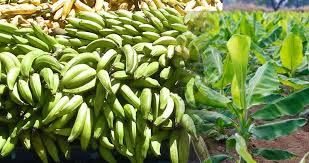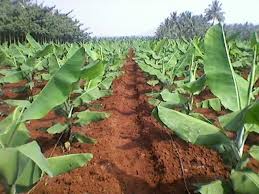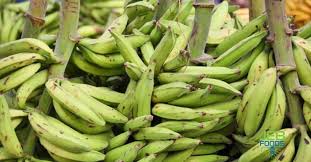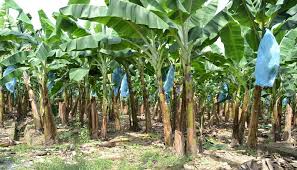Plantain farming is a vital agricultural practice that focuses on cultivating plantain, a staple food in many tropical regions around the world. Plantains are a type of banana that is larger, starchier, and typically used for cooking rather than eaten raw.
They are an essential part of the diet in many countries, particularly in Africa, the Caribbean, and parts of Latin America, where they provide a significant source of carbohydrates, vitamins, and minerals. The rising global demand for plantains due to their versatility in culinary applications and their nutritional value makes plantain farming a lucrative venture for many farmers.
The cultivation of plantains involves several key factors, including the selection of appropriate land, soil preparation, planting techniques, and ongoing management practices. Plantains thrive in well-drained, fertile soils with a pH level between 5.5 and 7.5. They require a warm climate, abundant rainfall, and protection from strong winds. Understanding the environmental needs of plantains is crucial for maximizing yields and ensuring the health of the plants throughout their growing cycle.
Choosing the right variety is also essential in plantain farming. There are several cultivars available, each with unique characteristics regarding growth habits, size, and culinary uses. Farmers must consider their local market preferences and the specific climate conditions in their region when selecting the best variety for cultivation. Popular varieties include the Green Plantain, which is typically harvested immature for cooking, and the Ripe Plantain, which is sweeter and often used in desserts and snacks.
Plantain farming requires careful attention to planting and management practices. Farmers must space the plants adequately to allow for optimal growth and airflow, typically planting them in rows.
The planting process usually involves creating a hole in the ground, adding organic matter or fertilizers to enrich the soil, and placing the plantain suckers or seeds into the hole before covering them with soil. Regular irrigation and the use of mulch can help retain moisture and suppress weeds, which compete with the young plants for nutrients and water.
Pest and disease management is another critical aspect of successful plantain farming. Various pests, such as the banana weevil and aphids, can threaten the crop’s health. Additionally, diseases like black Sigatoka can severely impact yields if not controlled. Implementing Integrated Pest Management (IPM) strategies, which combine biological, cultural, and chemical methods, is essential for minimizing crop losses and maintaining the sustainability of the farming practice.
Harvesting plantains at the right time is crucial for ensuring the best quality and marketability. Plantains are typically harvested when they reach maturity but before they fully ripen. This stage allows them to maintain their starchy texture for cooking purposes. After harvesting, proper handling and storage practices are necessary to prevent spoilage and extend shelf life, ensuring that farmers can maximize profits from their yield.
Plantain farming offers numerous benefits to farmers and communities. With its high nutritional value, versatile culinary applications, and increasing global demand, cultivating plantains can be a profitable venture.
By understanding the essential practices involved in plantain farming, including land selection, variety choice, planting techniques, and pest management, farmers can successfully grow this important crop and contribute to food security in their regions.
As we explore the complete guide on plantain farming, we will delve deeper into each aspect to equip aspiring farmers with the knowledge and skills needed for success in this rewarding agricultural endeavor.
Plantain Varieties

Plantains, a staple food in many tropical regions, come in several varieties, each with distinct characteristics and uses. Understanding the different types can help farmers choose the best ones for their cultivation needs.
1. French Plantains: This variety is the most commonly grown type. It has a green skin and is typically harvested when still green. French plantains are starchy and are often used in savory dishes.
2. Horn Plantains: Known for their larger size, horn plantains are slightly sweeter than French plantains. They are commonly found in the Caribbean and are ideal for frying or boiling.
3. Cooking Plantains: These are used primarily for cooking. They are starchier and less sweet than dessert varieties, making them suitable for frying, boiling, or baking.
4. Sweet Plantains: These varieties are yellow or brown when ripe and have a sweeter taste. They are often used in desserts or as a side dish.
5. Red Plantains: Less common, red plantains are similar to yellow varieties but have a reddish skin. They are sweeter when ripe and can be used in a variety of dishes.
Understanding these varieties will help in selecting the best plants for specific climates and culinary uses.
Site Selection for Plantain Cultivation
Choosing the right site is crucial for successful plantain cultivation. Here are key factors to consider:
1. Climate: Plantains thrive in warm, humid climates. Ideal temperatures range between 25°C to 30°C (77°F to 86°F). Areas with consistent rainfall or access to irrigation are preferable.
2. Topography: Choose a site with gentle slopes to facilitate drainage. Avoid low-lying areas prone to waterlogging, as excess moisture can damage plantain roots.
3. Soil Type: Well-drained, loamy soils rich in organic matter are ideal for plantain cultivation. Avoid sandy or clay soils, which can either drain too quickly or retain too much water.
4. Sunlight: Plantains require full sun for optimal growth. Select a site with at least 6-8 hours of direct sunlight daily.
5. Accessibility: Ensure the site is accessible for planting, maintenance, and harvesting. Proximity to markets for selling the produce is also essential.
Selecting a suitable site based on these criteria will help establish a successful plantain farm.
Soil Preparation and Fertility Management
Proper soil preparation and fertility management are vital for healthy plantain growth. Here are steps to follow:
1. Land Clearing: Clear the land of weeds, rocks, and debris. This helps reduce competition for nutrients and makes planting easier.
2. Soil Testing: Conduct a soil test to determine pH and nutrient levels. Plantains prefer a slightly acidic to neutral pH (around 5.5 to 7.0).
3. Soil Amendments: Based on the soil test results, add organic matter like compost or well-rotted manure to improve fertility. This enriches the soil with essential nutrients.
4. Tillage: Turn the soil to a depth of about 30 cm (12 inches) to aerate it and mix in organic matter. This process also helps eliminate pests and diseases.
5. Fertilizer Application: Apply fertilizers based on soil test recommendations. A balanced fertilizer (N-P-K ratio) can support healthy growth. Use fertilizers in split applications throughout the growing season for optimal nutrient uptake.
6. Mulching: Apply organic mulch around the plants to conserve moisture, suppress weeds, and enhance soil fertility as it decomposes.
Read Also: Types of Flowers
Planting Techniques for Plantains

The right planting techniques can significantly impact plantain growth and yield. Here’s how to plant them effectively:
1. Seed Selection: Choose healthy, disease-free planting materials (suckers) from mature plants. Select the appropriate variety based on local conditions and market demand.
2. Planting Time: The best time to plant is at the beginning of the rainy season to ensure adequate moisture for growth.
3. Planting Hole Preparation: Prepare planting holes measuring about 30 cm x 30 cm x 30 cm (12 inches) for each sucker. Space the holes 2-3 meters (6-10 feet) apart in rows to allow for adequate growth.
4. Planting Depth: Place the sucker in the hole, ensuring that the roots are well spread out. Cover the roots with soil and gently firm it down. The base of the plant should be level with the surrounding soil.
5. Watering: Water the newly planted suckers thoroughly to ensure good soil contact and encourage rooting. Maintain consistent moisture levels, especially during dry periods.
6. Maintenance: After planting, monitor for weeds and pests. Regular weeding, mulching, and fertilizer application will support healthy growth.
Watering and Irrigation Practices
Proper watering and irrigation are essential for the healthy growth of plantains. Here are effective practices to follow:
1. Soil Moisture Monitoring: Regularly check soil moisture levels to ensure they remain consistent. Plantains prefer moist but well-drained soils.
2. Irrigation Methods: Drip irrigation delivers water directly to the root zone, reducing water waste and promoting deep root development. Sprinkler irrigation can cover larger areas and is suitable for even distribution of water. Flood irrigation involves flooding the field to allow water to saturate the soil but can lead to waterlogging if not managed properly.
3. Frequency of Watering: During dry periods, plantains typically require watering every 1-2 weeks. Adjust frequency based on rainfall and soil moisture levels.
4. Mulching: Apply organic mulch around the base of the plants to help retain soil moisture, reduce weed competition, and improve soil health as it decomposes.
5. Rainwater Harvesting: Consider implementing rainwater harvesting systems to collect and store rainwater for irrigation, especially in areas with inconsistent rainfall.
Pest and Disease Management in Plantain Farming
Effective pest and disease management is crucial to protect plantain crops. Here are key strategies:
1. Integrated Pest Management (IPM): Implement IPM practices that combine biological, cultural, and chemical controls to manage pests sustainably.
2. Pest Monitoring: Regularly inspect plants for signs of pests such as aphids, weevils, and nematodes. Use yellow sticky traps to monitor flying pests.
3. Cultural Practices: Rotate plantain crops with non-host plants to disrupt pest life cycles. Intercropping legumes or other crops alongside plantains can deter pests and improve soil health.
4. Biological Control: Use natural predators, such as ladybugs or parasitic wasps, to manage pest populations, reducing reliance on chemical pesticides.
5. Chemical Control: If necessary, apply pesticides following local regulations and guidelines. Opt for less harmful, environmentally friendly options where possible.
6. Disease Management: Monitor for diseases like black Sigatoka and leaf spot, using fungicides as needed and removing infected plant debris. Prevent bacterial wilt by avoiding overhead irrigation and maintaining good sanitation practices.
7. Plant Health Monitoring: Ensure plants are healthy and well-nourished to increase resistance to pests and diseases. Regularly test soil for nutrient levels.
Harvesting Techniques for Plantains
Harvesting plantains at the right time and using proper techniques ensures quality and reduces post-harvest losses. Here’s how to do it effectively:
1. Harvesting Time: Plantains are usually ready to harvest when they are full-sized and have turned a light green color, typically around 75-90 days after planting. For cooking plantains, harvest when they are still green; for sweet varieties, wait until they begin to yellow.
2. Tools Needed: Use a sharp knife or machete for harvesting and ensure that tools are clean to prevent disease transmission.
3. Harvesting Process: Carefully cut the entire bunch from the plant, ensuring not to damage the main stem, and cut at the base, leaving a short stem attached to the bunch. Gently handle the bunch to avoid bruising and place harvested plantains in a padded container to protect them during transport.
4. Post-Harvest Treatment: Remove excess leaves and debris from the harvested bunch, avoiding washing the plantains as moisture can promote decay. Store green plantains in a cool, dry place to allow them to ripen gradually. You can also place them in a paper bag to speed up ripening by trapping ethylene gas.
5. Storage Conditions: Store harvested plantains in a well-ventilated area away from direct sunlight, with ideal storage temperatures between 12°C to 15°C (54°F to 59°F).
Read Also: Flower Cultivation Techniques
Post-Harvest Handling and Storage

Post-harvest handling and storage are critical aspects of plantain farming that significantly influence the quality and marketability of the crop. After harvesting, plantains are susceptible to bruising and spoilage, which can lead to economic losses for farmers. Therefore, implementing proper handling practices is essential.
1. Immediate Handling: Farmers should handle plantains carefully during harvest to avoid damaging the fruit. Using sharp knives to cut the bunches minimizes damage, and workers should wear gloves to prevent bruising.
2. Cleaning: After harvesting, plantains should be cleaned to remove any dirt or debris. This helps prevent the growth of mold and pests during storage.
3. Sorting: Sorting involves categorizing plantains based on size and ripeness. This allows farmers to market them effectively and meet consumer preferences.
4. Ripening: Plantains are usually harvested while still green. Farmers can control the ripening process by placing them in a warm, humid environment, or using ethylene gas, which speeds up the ripening process.
5. Storage Conditions: Proper storage conditions are crucial for extending the shelf life of plantains. They should be stored in a cool, dry place, away from direct sunlight. Ideal temperatures range from 13°C to 15°C (55°F to 59°F). Storing plantains in ventilated containers or baskets can help reduce moisture buildup and prevent spoilage.
6. Transportation: During transportation to markets, plantains should be packed carefully in well-ventilated containers to minimize damage and ensure airflow. This is especially important if the journey takes a long time.
Marketing Strategies for Plantain Farmers
To successfully market plantains, farmers must adopt effective marketing strategies that align with consumer preferences and market demands. Here are some key strategies:
1. Understanding the Market: Farmers should conduct market research to understand consumer preferences, trends, and competition. This knowledge will help them identify potential buyers and tailor their products accordingly.
2. Direct Selling: Farmers can sell directly to consumers through farmers’ markets, community-supported agriculture (CSA) programs, or local grocery stores. This approach can enhance profitability by eliminating middlemen.
3. Value Addition: Introducing value-added products, such as plantain chips, flour, or puree, can attract a wider customer base. Value-added products often have a longer shelf life and can command higher prices.
4. Branding and Packaging: Developing a strong brand identity and using attractive packaging can help plantain farmers differentiate their products in the market. Clear labeling with nutritional information can also attract health-conscious consumers.
5. Online Marketing: Leveraging social media and e-commerce platforms can help farmers reach a broader audience. Creating a website or using platforms like Instagram and Facebook can increase visibility and attract customers.
6. Collaboration and Cooperatives: Joining agricultural cooperatives allows farmers to pool resources, share knowledge, and access larger markets. Collaborating with other farmers can enhance bargaining power and reduce costs.
7. Educational Campaigns: Conducting educational campaigns about the nutritional benefits and versatility of plantains can help increase demand. Workshops, cooking demonstrations, and online content can educate consumers on how to incorporate plantains into their diets.
Challenges in Plantain Farming
While plantain farming presents significant opportunities, several challenges need to be addressed to ensure sustainable growth in the sector.
1. Pest and Disease Management: Plantains are vulnerable to various pests and diseases, such as banana weevils and black Sigatoka. Effective pest management strategies are crucial to mitigate losses and maintain crop health.
2. Climate Change: Changes in weather patterns, such as increased rainfall or droughts, can affect plantain production. Farmers need to adapt their practices to cope with these changes, which may include selecting resilient varieties and implementing water conservation techniques.
3. Market Access: Limited access to markets can hinder farmers’ ability to sell their produce. Infrastructure issues, such as poor roads and lack of transportation, can impede timely deliveries and reduce profitability.
4. Labor Shortages: Many regions face labor shortages due to urbanization and migration. Farmers may need to invest in technology and mechanization to reduce reliance on manual labor.
5. Sustainable Practices: There is a growing demand for sustainable farming practices. Farmers must adopt environmentally friendly practices, such as organic farming and integrated pest management, to meet consumer preferences and regulatory requirements.
Future Trends In Plantain Plantation
1. Technology Adoption: Advancements in technology, such as precision agriculture and smart farming techniques, can improve productivity and reduce costs. Using data analytics for better decision-making is becoming increasingly important.
2. Organic Farming: The demand for organic plantains is rising as consumers become more health-conscious. Farmers who transition to organic practices can tap into this growing market.
3. Research and Development: Investment in research and development can lead to the discovery of new plantain varieties that are more resistant to pests and diseases, increasing overall yield.
4. Diversification: Farmers may explore diversifying their crops to reduce risks associated with monoculture. This can enhance soil health and provide additional income sources.
Do you have any questions, suggestions, or contributions? If so, please feel free to use the comment box below to share your thoughts. We also encourage you to kindly share this information with others who might benefit from it. Since we can’t reach everyone at once, we truly appreciate your help in spreading the word. Thank you so much for your support and for sharing!






